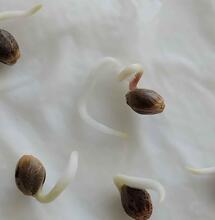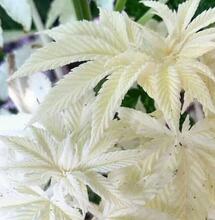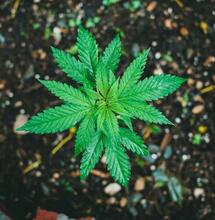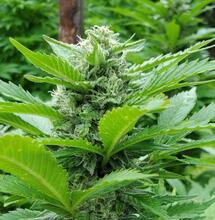How to Grow Marijuana Efficiently with LED Grow Lights for Indoor Cultivation
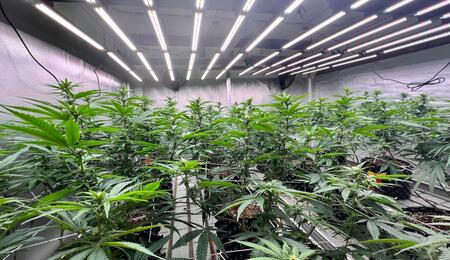
So, you're thinking about growing your own cannabis indoors? Smart move. Taking control of your supply means knowing exactly what goes into your plants and what you get out. But let's be honest, setting up a successful indoor grow isn't just about throwing some seeds in a pot under a bulb.
The heart of your operation, the absolute game-changer for efficiency, yield, and quality, is your lighting system. Gone are the days when massive, heat-spewing HID lamps were the only option. Today, savvy growers are turning to LED technology, and for compelling reasons that go far beyond just saving a few bucks on the electricity bill. This guide dives deep into how to harness the power of LED grow lights to cultivate top-shelf marijuana efficiently and effectively within your own four walls.
Why LED Grow Lights Are Revolutionizing Indoor Cannabis Cultivation
For decades, High-Intensity Discharge (HID) lights like Metal Halide (MH) and High-Pressure Sodium (HPS) dominated the indoor growing scene. They worked, but they came with significant drawbacks: massive energy consumption, intense heat output requiring heavy-duty ventilation and cooling systems, and a limited, often inflexible light spectrum. Enter LED (Light Emitting Diode) technology. Initially expensive and less powerful, LEDs have undergone a phenomenal transformation.
Modern horticultural LEDs are specifically engineered to deliver the precise light spectrums plants crave for photosynthesis and development, all while sipping electricity compared to their HID counterparts. The efficiency gains are staggering – often using 40-60% less power for the same or even better light output usable by plants (Photosynthetically Active Radiation, or PAR). This translates directly to lower operating costs month after month, making your grow more sustainable and cost-effective right from the start.
Planning Your Efficient Indoor Grow Space: Size, Setup, and Environment
Before you even plug in your first LED light, careful planning is essential for efficiency. Start by realistically assessing the space you have available – a dedicated closet, a spare room, or a grow tent. Remember, your space dictates the scale of your operation and consequently, the size and number of lights you'll need. Efficient use of vertical space is crucial; consider using techniques like the Sea of Green (SOG) or Screen of Green (ScrOG) to maximize canopy coverage under your lights. Next, focus on environmental control.
While LEDs run significantly cooler than HIDs, they still produce some heat, and your plants need fresh air. Invest in proper ventilation – an inline fan paired with a carbon filter is essential not just for temperature and humidity control, but also for odor management. Aim for consistent temperatures (ideally 70-85°F or 21-29°C during lights on) and relative humidity levels that decrease slightly as your plants progress from seedling through flowering. Getting these fundamentals right creates the stable foundation upon which your efficient LED grow will thrive.
Choosing the Right LED Grow Light: Wattage, Spectrum, and Quality Matter
Not all LED grow lights are created equal, and selecting the right one is arguably the most critical purchasing decision for an efficient indoor cannabis grow. First, consider wattage. A common rule of thumb is to aim for 30-50 watts of actual power draw per square foot of canopy space for flowering cannabis. Don't be fooled by inflated "equivalent wattage" claims – always check the actual power consumption (in watts) from the wall. Second, spectrum is king. Full-spectrum white LEDs are popular and effective, mimicking sunlight. However, many top-tier lights incorporate specific red and blue diodes to enhance key growth phases: more blue during vegetative growth for bushier plants, and increased red during flowering to boost bud development and resin production. Look for lights with a high PAR output and good uniformity across your canopy. Crucially, prioritize quality and reliability.
Choosing a reputable grow light supplier known for using quality components (like Samsung LM301 diodes and Mean Well drivers) ensures consistent performance, longevity, and better light penetration. Established manufacturers like BATA LED grow light manufacturer often provide detailed PAR maps and spectrum charts, allowing you to make an informed decision based on your specific setup and goals. Remember, a cheap light often costs more in the long run through lower yields, higher electricity use per gram, and premature failure.
Setting Up Your LED Lights for Maximum Efficiency and Plant Health
You've got your high-quality LED light – now it's time to hang it correctly for peak performance. Proper hanging height is paramount and often differs significantly from HID setups. LEDs are intense! Placing them too close can cause "light burn" (bleaching or curling leaves), while hanging them too far away wastes energy and leads to stretching, lanky plants. Consult your light manufacturer's recommendations for different growth stages as a starting point. Generally, seedlings and clones need lights much higher (24-36 inches) or dimmed significantly, while mature plants in flower can often handle lights 12-24 inches away, depending on the fixture's intensity. Use the hand test: place your hand at the top of the canopy.
If it feels uncomfortably hot after 30 seconds, the light is likely too close. Many modern LEDs come with dimmers – use them! Start lower intensity during seedling/early veg and gradually increase as plants mature. Also, consider using light movers or arranging multiple smaller fixtures to ensure even light distribution and prevent "hot spots," maximizing the usable light for every plant.
Mastering the Grow: Vegging and Flowering Under Optimal LED Light
Understanding how cannabis responds to light throughout its lifecycle is key to efficiency under LEDs. During the vegetative stage, cannabis thrives on 18-24 hours of light per day. The blue-rich spectrum of quality LEDs promotes tight node spacing and robust leafy growth – the foundation for a high-yielding plant. Because LEDs run cooler, you can often place them closer than HIDs, resulting in denser growth without the risk of excessive heat stress. The real magic happens when you trigger flowering by switching the light schedule to 12 hours on, 12 hours off.
This uninterrupted dark period is absolutely critical. Any light leaks during the dark period can stress plants, cause hermaphroditism (producing both male and female flowers), and ruin your crop. Ensure your grow space is completely light-proof! During flowering, the red spectrum dominance in your LED light signals the plant to focus its energy on producing large, resinous buds. Monitor your plants closely; the efficiency of LEDs means they respond rapidly to environmental changes and feeding.
Beyond Light: Nutrients, Watering, and Training for Efficiency
While LEDs are the engine of your efficient grow, they don't operate in isolation. Your nutrient regimen needs to adapt. LED-grown plants often transpire (release water vapor) slightly differently than under hotter HIDs, potentially requiring slightly less frequent watering but careful monitoring to avoid drought stress. More importantly, plants under optimal LED light can metabolize nutrients incredibly efficiently. Be cautious not to overfeed! Start with nutrient solutions at lower strengths (perhaps 50-75% of bottle recommendations) and increase gradually only if the plants show signs of hunger (lighter green leaves). Nutrient brands specifically formulated for LED grows are becoming more common.
Complement your lighting with smart plant training techniques. Low-Stress Training (LST) involves gently bending stems to create a flatter, wider canopy, ensuring all bud sites receive direct light. Topping (cutting the main stem tip) encourages multiple main colas. These techniques maximize the efficiency of your LED light by ensuring minimal energy is wasted illuminating lower leaves and floor space, directing it instead to productive bud sites.
Troubleshooting Common LED Grow Challenges and Maximizing Yields
Even with the best setup, challenges can arise. The most common issue specific to LEDs is light burn, presenting as bleached or yellow tops, or leaves curling upwards like a taco. The fix is simple: raise your lights or dim them. Conversely, if plants are stretching excessively with large gaps between nodes, they need more light intensity or closer proximity. Nutrient issues can sometimes look different under LEDs; magnesium deficiency (showing as yellowing between leaf veins) is slightly more common. Ensure your nutrient mix includes sufficient calmag, especially if using reverse osmosis water.
To truly maximize efficiency and yield, dial in your environment meticulously. Consistent temperature and humidity are non-negotiable. Invest in simple tools like thermometer/hygrometer combos. Keep a grow journal – track light height, feeding schedules, and plant responses. Small, informed adjustments based on observation lead to significant gains. Remember, the goal of efficient LED growing isn't just about big yields (though that's nice!), but about achieving the highest quality bud with the least waste of energy, space, and resources.
The Bright Future of Growing: Efficiency Meets Quality
Transitioning to LED grow lights for your indoor cannabis cultivation is one of the smartest moves you can make for long-term efficiency, cost savings, and environmental responsibility. The initial investment in quality fixtures from a trusted Boya grow light supplier pays dividends through dramatically lower electricity bills, reduced cooling costs, and longer lifespans compared to outdated HID technology. Manufacturers like BATA LED grow light manufacturer are continuously innovating, offering lights with spectrums tailored to cannabis and features that simplify the grower's life.
By understanding the unique advantages of LEDs – their targeted spectrum, cool operation, and energy sipping nature – and combining them with solid growing fundamentals (proper environment, appropriate nutrients, and smart training), you unlock the potential for consistent harvests of potent, flavorful buds. It’s a move that benefits your wallet, your plants, and the planet. Embrace the efficiency revolution and experience the difference LED technology makes in your indoor garden. Happy growing!
